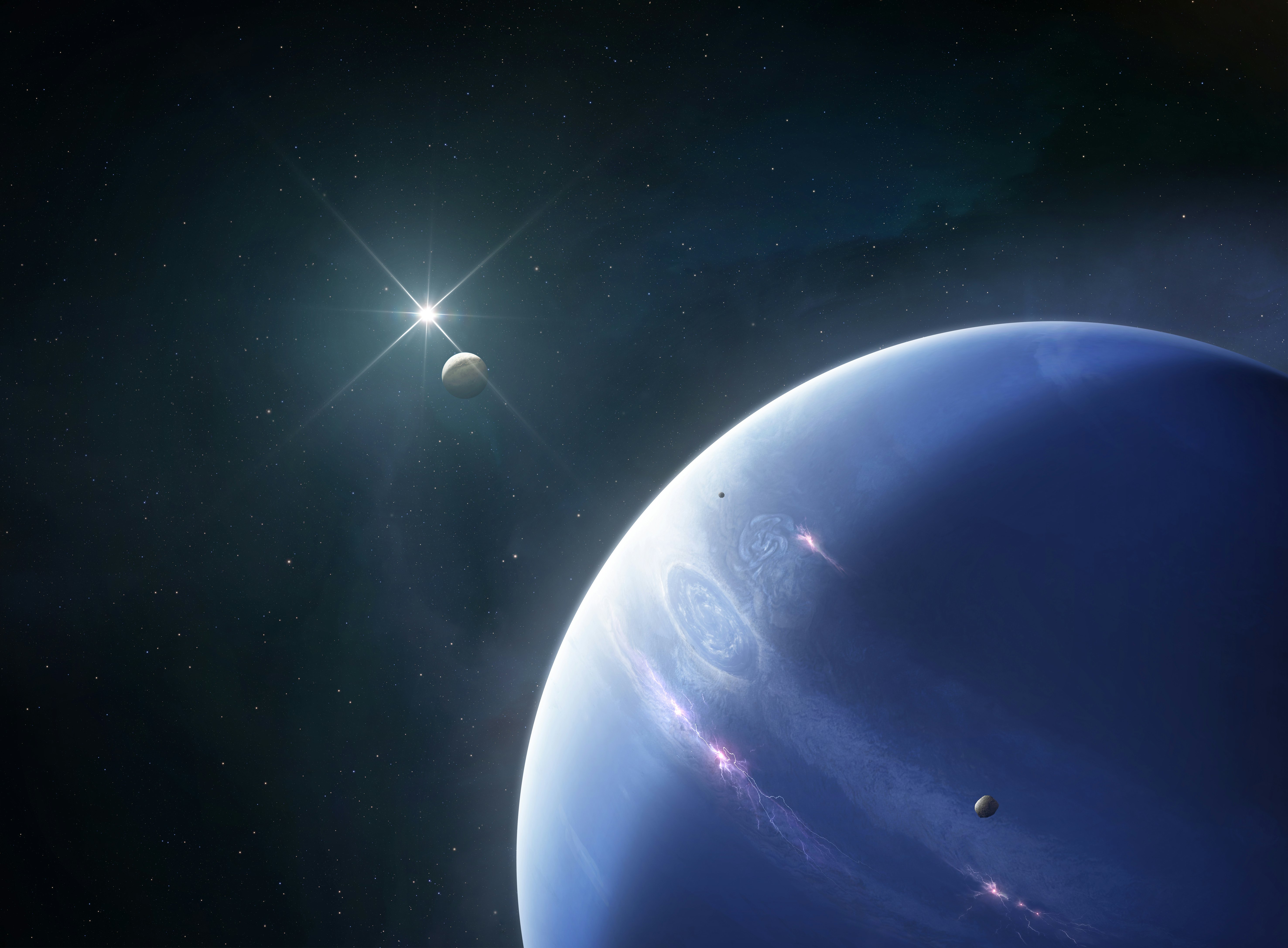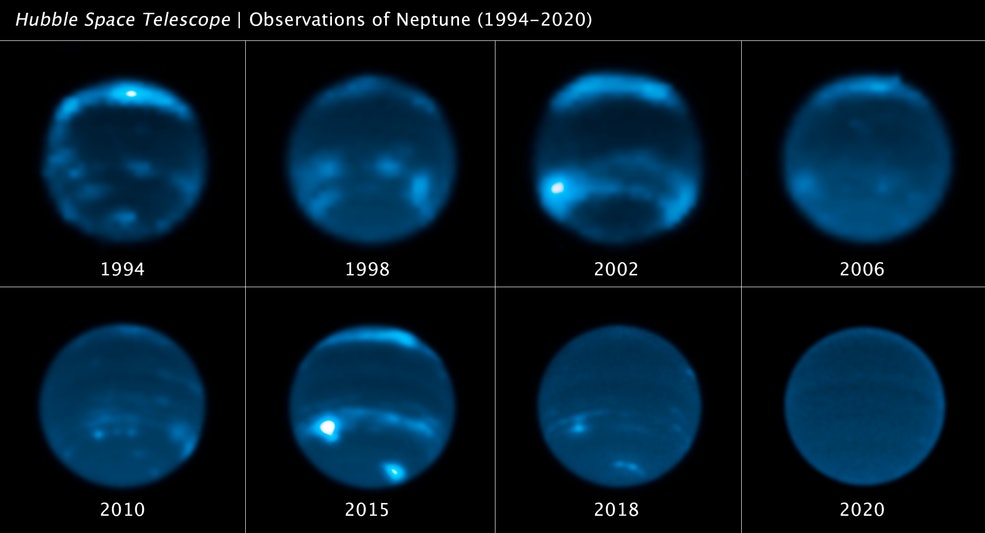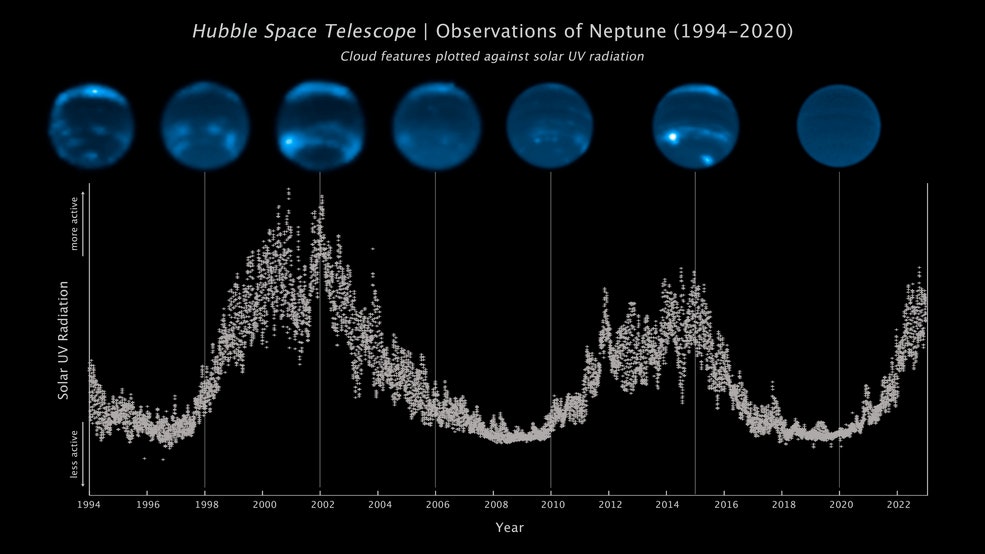
Neptune receives a tiny fraction of the sunlight that strikes Earth, yet somehow, that’s enough to transform the clouds of this faraway world.
The main driver of cloud formation is generally the seasons, when a planet tilts a different part of its body towards or away from the Sun. Neptune’s seasons last decades, so short-term changes on the timescale of months to the cirrus clouds in the gas giant’s upper atmosphere must have another explanation.
With help from the resilient science program of the Hubble Space Telescope, astronomers are finding that while the outer Solar System is far away, it’s never out of the Sun’s reach. Astronomers, using nearly 30 years worth of data, watched Neptune’s cloud cover transform over time — including a recent turn toward near-cloudlessness.
"It's fascinating to be able to use telescopes on Earth to study the climate of a world more than 2.5 billion miles away from us," Carlos Alvarez, staff astronomer at Keck Observatory in Hawaii and co-author of the new research, shares in an announcement NASA published on Thursday.

How does the Sun affect Neptune’s clouds?
The Sun goes through mood swings every 11 years. In fact, we’re currently due soon for a peak in activity, when sunspots will sprout and solar flares will more frequently blast out.
In the new work, astronomers have connected the Sun’s ultraviolet radiation, which peaks as the Sun roars up, and dips as the Sun quiets down, with the appearance (or in this case, disappearance) of clouds on Neptune. That’s despite the fact that Neptune is the farthest planet known in the Solar System, and receives sunlight roughly 0.1 percent the intensity of what Earth gets.
The researchers behind a new paper, published in the journal Icarus, made the fascinating finding when they combined archival Hubble observations beginning in 1994, as well as ground-based observations from the Lick Observatory in California (from 2018-2019) and the Keck Observatory (2002-2022).
It all began when lead paper author Erandi Chavez, who is currently a graduate student at the Center for Astrophysics | Harvard-Smithsonian in Cambridge, Massachusetts, was an astronomy undergraduate student at the University of California, Berkeley. Years of research and troves of imagery later, Chavez has enough data to support the theory that solar ultraviolet radiation triggers a photochemical reaction that produces Neptune’s clouds.
The team found that Neptune’s cloud tops not only react to the ultraviolet radiation, but sustain changes, too. The telescopes show that cloud activity can drop in just a few months, and in some cases, clouds can take years to return to their former levels. Chavez, who also shared her thoughts in NASA’s announcement, said the decades-long data on Neptune’s clouds is “extremely exciting” and packed with science that’s “unexpected.”

The big picture
Rather than looking at data across just one solar cycle, the team looked at 2.5 solar-cycle’s worth of data. As a result, they noticed that some cycles created different changes than others, details that fortify the connection between the Sun and Neptune.
"These remarkable data give us the strongest evidence yet that Neptune's cloud cover correlates with the Sun’s cycle," Imke de Pater, emeritus professor of astronomy at UC Berkeley and senior author of the study, shares in the announcement.
The telescopic trio whose observations made this discovery possible will also be handy for future work into Neptune’s “dynamic appearance,” NASA officials said. And they’ll facilitate our best guesses for what worlds beyond the Sun might look like.







